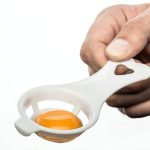SHRINK THE STEP, EXPAND THE SELF – Baby Tweaks for Big Brain Shifts

Stuck Isn’t Shameful — It’s a Signal
That frozen wave of “so much to do” is not laziness or lack of willpower. It is the brain’s threat-detection network declaring, This feels too big, too vague, or too risky. The moment we shrink the danger, the circuit quiets. In social-work practice we call this partializing—breaking a tangled problem into pieces small enough to pick up. Torah calls it hishtadlus—the first doable deed that opens a conduit for blessing. Neuroplasticity pioneer Michael Merzenich explains the biology plainly: the cortex allocates resources only to tasks it believes we can execute. Reduce the challenge and the brain releases its brakes.
Baby Steps & Brain Wiring
Tiny moves ignite neuroplasticity. Tie your sneakers—not run five miles. Type thirty words—not finish the chapter. Every micro‑win slips under your “resistance radar”, drops a squirt of dopamine, and engraves Hebb’s law: neurons that fire together grow together. The quote I stated in my Neurocoaching class that Mark. R. Waldman seemed to like was: “Neurons that flow together, grow together.” Millimeter motions, says Norman Doidge, can re‑map whole sensorimotor strips.
From Ignorance to Fluency
Progress follows Noel Burch’s Four Stages of Competence: we begin unconsciously incompetent (blissful ignorance), grow consciously incompetent (painful awareness), practice into conscious competence (effortful success), and finally coast on unconscious competence (automatic fluency). Persistent baby steps climb each rung.
Habits run on a loop—prompt, ability, motivation—echoed in the brain’s striatum. Shrink the action and “ability” skyrockets; the loop closes effortlessly. Phillippa Lally found micro‑behaviors go autopilot in about 18 days, mirroring Judaism’s 49‑day Sefiras HaOmer for emotional refinement.
Dialectics: Rambam Meets DBT
Maimonides anticipated modern opposite action: practice the trait you lack in its extreme form until you rebalance. Dr Marsha Linehan’s DBT proves the same: act calm when angry, hopeful when down—behavior rewires emotion. The Tanya calls the conduit a tzinor: with just a fine opening Divine light floods in. Sefer HaChinuch boils it down—Adam nifal kefi pe’ulosav: you are molded by what you do. And, Acharei hap’eulos, nim’shachin levavos – Our emotions are drawn after behavioral action.
Emotion Follows Action
Some readers ask, “Where’s the passion?” Neuroscience answers: feelings follow movement. First the basal ganglia—our brain’s action starter—fires the “go” signal. A moment later the limbic system—the emotion center—tags that action with feeling. Do the deed, then watch the mood light up. Rabbi Eliyahu Dessler put it simply: the heart follows the hand. Motivation researcher Ayelet Fishbach confirms it—behaviors send a message to the self, and identity shifts to match.
Motivation scientist Ayelet Fishbach adds seven situational boosters:
- Positive, inspiring goals (“run a race”) beat avoidance scripts like “I’m so lazy.”
- Make it fun—pair chores with pleasure.
- Watch the mid‑project slump—track progress visibly.
- Pre‑commit to patience—decide now to wait for the bigger reward.
- Recruit allies—shared goals fuel persistence.
- Prioritize clearly between “ought” and “ideal” aims. Stop “Shoulding on yourself.”
- Use feedback wisely—know whether success or failure motivates you.
Relapse isn’t failure—it’s feedback. Shrink the step again and restart. My own writing practice took many micro-efforts to begin. Our personality and identity are a downstream of behaviour. One ridiculously small act today can tilt the entire inner landscape tomorrow. Shrink the step—then watch yourself expand.
ENJOY MY SUNO SONG FOR SHRINKING THE STEP TO OPEN THE FLOW BY CLICKING HERE
For a more extensive version of this article, please join my Substack column BY CLICKING HERE
We love hearing from you, please feel free to leave your comments below.
With Gratitude,
Rus Devorah
REFERENCES:
Clear, J. (2018). Atomic Habits. Avery. Doidge, N. (2007). The Brain That Changes Itself. Viking.
Fishbach, A. (2022). Get It Done: Surprising Lessons from the Science of Motivation. Little, Brown Spark.
Fogg, B. J. (2019). Tiny Habits. Houghton Mifflin Harcourt.
Linehan, M. M. (2015). DBT® Skills Training Manual (2nd ed.). Guilford.
Merzenich, M. (2013). Soft‑Wired: How the New Science of Brain Plasticity Can Change Your Life. Purrington.
Mishneh Torah, Hilchos De’os — Maimonides.
Tanya, Ch. 12 & 15 — Rabbi Shneur Zalman of Liadi.


